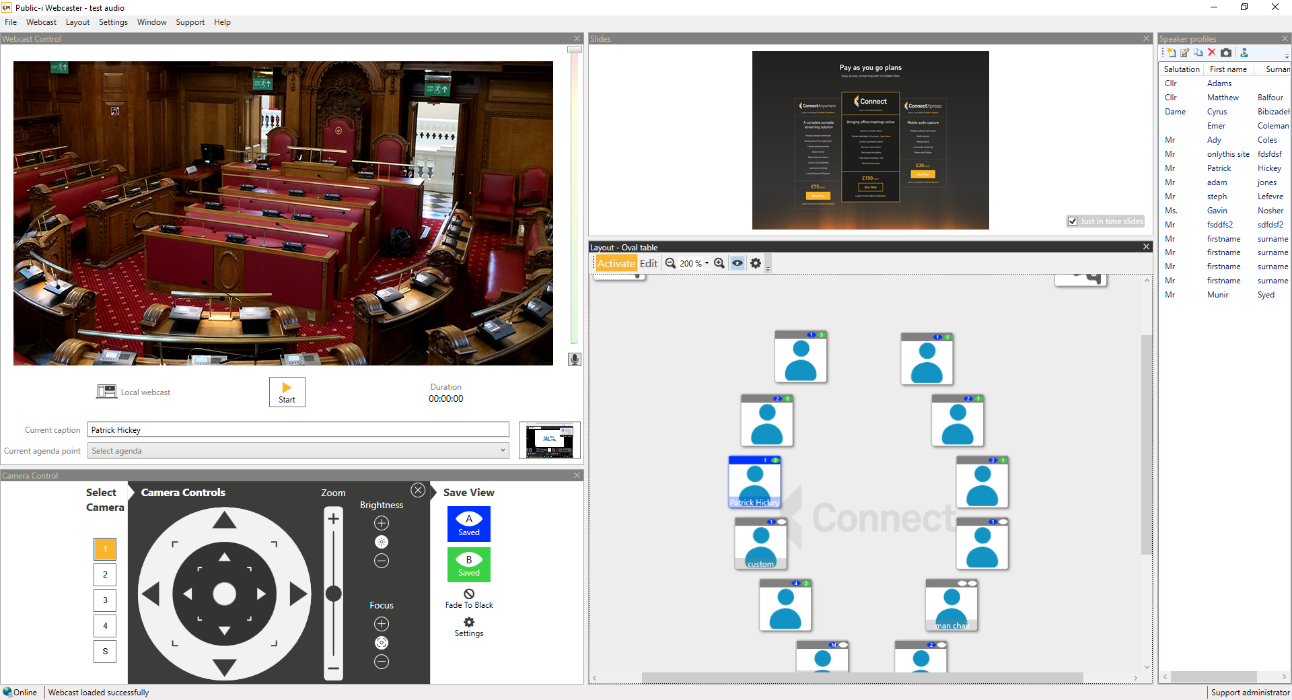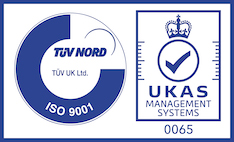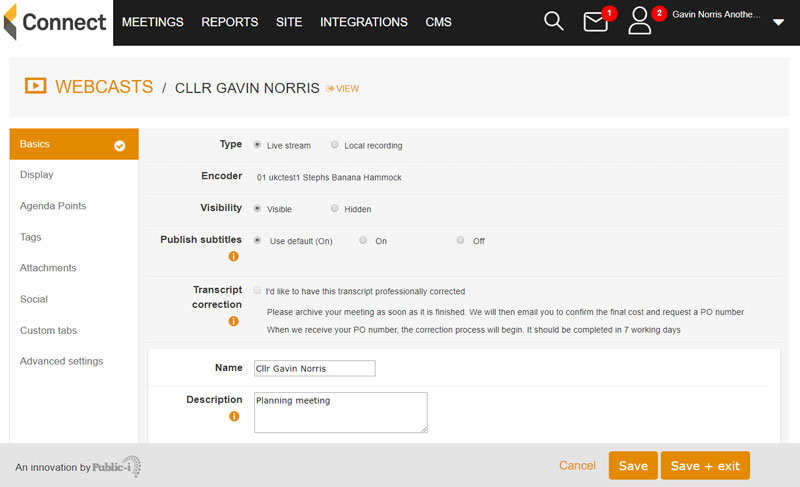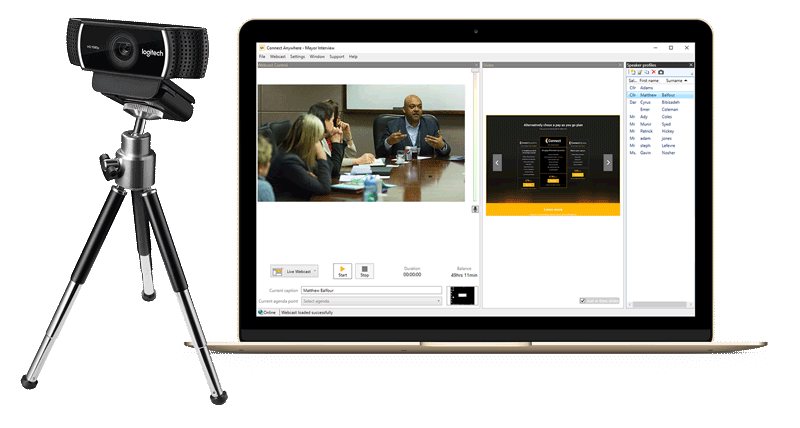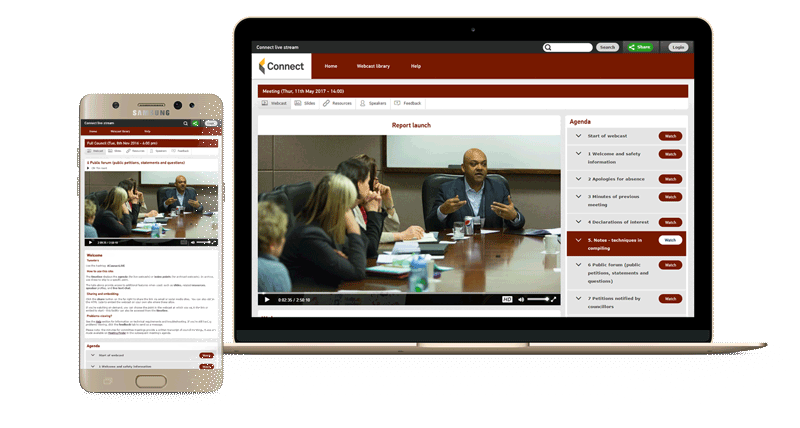Webcasting services… there’s a lot of jargon floating around.
We know we’re guilty of it.
To makes things easier, we’ve defined the common terms:
Webcasting services (A-E)
Access control: Host private webcasts via login. You can use this for internal briefings. Alternatively, it can be a means to generate revenue when hiring out facilities.
Agenda timeline: An on demand feature that allows viewers to skip to and share specific points of the video.
Archive: A library of webcasts hosted online. Public-i save your webcasts indefinitely so they can be re-archived at any time for any period.
Automated slides: A tool allowing the viewer to watch slides in time with the webcast.
AV: Audio visual – microphones, speakers, presentation screens, projectors etc.
Camera follow: The automatic movement of a camera to an activated microphone. Consequently, this negates the need for an operator. We’ve written more about this here.
Content: The recorded sounds, images and other data created, stored, relayed or linked to a webcast.
Development roadmap: Client-led “to do list” to enhance product features. This is not set in stone and evolves with changing technologies.
Dual-language: The ability to watch the webcast in two different languages. Public-i has developed this feature in English and Welsh.
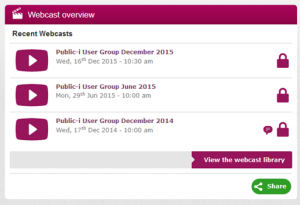
Access Control
(E-M)
Embed: Share the webcast player or clip via an embed code. Embedding the player on your own website is a good way of building viewership.
Encoder: The computer device that coverts the camera feed into streaming data.
Encoding: The process of converting analogue to digital via audio, video or multimedia data types.
Essex Procurement Hub (Webcasting Services Framework Agreement (PROC16-0133)): The hub is for webcasting and associated services. It was advertised in the Official Journal of the European Union (OJEU).
G-Cloud: A digital catalogue of cloud-based services for the public sector. Our Connect Anywhere and events services are available on G-Cloud 9.
Hosting: Storage of webcasts on servers so they can be accessed over the internet.
HTML5: Open browser technology allowing viewers to watch video without plugins, e.g. Windows Media and Adobe Flash. Read about the benefits of HTML5 here.
Local webcast: A pre-recorded webcast that is not streamed live and is uploaded later.
On demand: The ability to watch a webcast after the live event.
Messenger: A service which allows the technician to provide real-time support for every webcast.
Microsite: A bespoke branded website for your webcasts. The microsite includes the webcast player, archive and other tabs to enhance the user experience.
Monitoring: Service Desk support of every live webcast via messenger service, telephone and email.
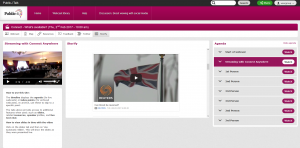
Microsite
(P-T)
Player: Window to play local or live webcast in standard or high definition. The player can be embedded on external sites.
Responsive design: Software that addresses how content is displayed across different screen sizes and devices.
SaaS: Software-as-a-service, e.g. Connect Anywhere – as software only download for mobile broadcasting.
Share: Reach more people online by sharing content on social media like Facebook, Twitter and LinkedIn.
SLA: Service level agreement detailing supplier’s response times to hardware and software faults.
THEOplayer: Trusted HTML5 player used by many major companies. Facilitates in sync captions, agendas and slides during live webcasts.
Third-party integration: Working with other applications to improve the product. For example, Connect is integrated with Modern.Gov and CMIS so officers can manage contextual information and webcast bookings from one interface.
Turn-key: Provision of a complete product – for immediate use. Public-i webcasting services include hardware, software, hosting & streaming, live monitoring, training plan, project management and a Service Level Agreement (SLA).
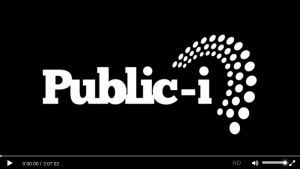
Player
(U-Z)
User group: A forum for clients to share their experiences and feed the product development roadmap.
UX Design: User experience design is the process of enhancing user satisfaction of a product. This is achieved through feedback and testing.
Views: People that have watched your webcast for more than a minute. Anything less would be defined as a bounce (like Google Analytics) and would be discounted. We’ve written more about stats in this post.
Webcast: A live broadcast streamed via the web to many simultaneous viewers.
Webcast data: The layout and presentation of the content and includes the contextual information such as index points and speaker names.
Webinar: A seminar or tutorial conducted over the internet.
Widget: A feature that can be enabled on the webcasting microsite for additional functionality, e.g. Twitter feed, live chat or access control.
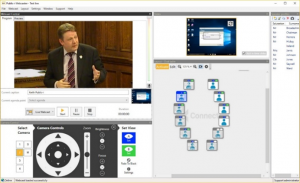
Webcaster software

